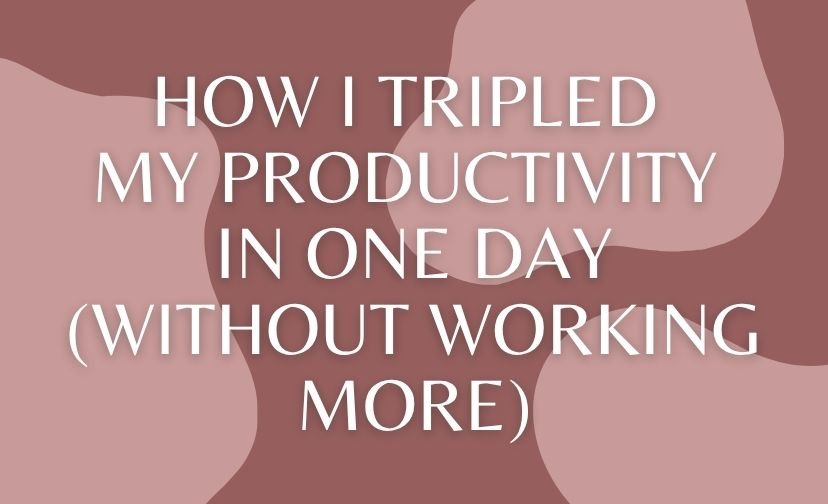Imagine having a command centre at your fingertips, orchestrating your daily tasks with the precision of a maestro conducting a symphony. This is the magic of a productivity dashboard. In a world bustling with endless to-do lists and digital distractions, crafting a personalized productivity dashboard can be your secret weapon to staying organized and focused.
But how do you build one without feeling overwhelmed? Fear not, as this guide will walk you through the process step-by-step, ensuring that by the end, you’ll have a tailored dashboard that not only streamlines your workflow but also inspires you to reach new heights of efficiency.
Understanding the Productivity Dashboard
Before starting the creation process, it’s crucial to understand what a productivity dashboard is and why it’s worth the effort. This understanding will serve as the foundation for your personalized tool.
What is a Productivity Dashboard?
A productivity dashboard is akin to a digital cockpit for your life, where you can view, manage, and analyze your tasks, goals, and progress all in one place. It amalgamates various productivity tools and data sources into a cohesive interface, offering a snapshot of your day-to-day activities.
Imagine having a personalized roadmap that shows your destination and highlights the best route, traffic conditions, and pit stops along the way.
Start simple when creating your dashboard. Begin with key elements, such as a task list and a calendar. As you become more comfortable, you can add features like habit trackers or project timelines. This gradual approach helps prevent overwhelm and ensures each element serves a clear purpose.

Benefits of a Personalized Dashboard
Why build a personalized dashboard? The answer lies in the unique benefits it offers. Unlike generic productivity tools, a personalized dashboard caters to your needs and preferences.
This means you spend less time navigating unnecessary features and more time focusing on what truly matters. Moreover, it fosters a sense of ownership and motivation, as every component is tailored to align with your personal goals.
Additionally, a well-designed dashboard can significantly reduce decision fatigue. Having all necessary information readily available eliminates the need to switch between apps or constantly search for data. This seamless integration saves time and boosts mental clarity, allowing you to make informed decisions swiftly.

Getting Started with Your Dashboard
Embarking on the journey to create your personalized dashboard requires some initial groundwork. Identifying your productivity goals and choosing the right tools are pivotal steps that set the stage for success.
Identifying Your Productivity Goals
Begin by reflecting on what you hope to achieve with your dashboard. Are you aiming to increase work efficiency, balance personal commitments, or perhaps both? Understanding your primary objectives will guide the design and functionality of your dashboard. Consider factors such as task management, time tracking, and goal setting.
Once your goals are clear, break them down into actionable steps. This process not only clarifies your vision but also helps in prioritizing features. For instance, if time management is a priority, incorporating a visual timeline or calendar might be beneficial.

Choosing the Right Productivity Tools
With your goals in mind, it’s time to select the tools that will form the backbone of your dashboard. The market is brimming with options, from task managers like Trello and Todoist to comprehensive suites like Notion and ClickUp. Choose tools that resonate with your working style and integrate seamlessly with each other.
When selecting tools, consider compatibility and integration. Opt for platforms that offer robust APIs or native integrations with other apps you frequently use. This ensures a smooth flow of information across your dashboard, enhancing its utility and reducing manual data entry.
Here’s a table to help compare some popular productivity tools based on features:
| Tool | Key Features | Best For |
|---|---|---|
| Trello | Kanban boards, integrations, mobile app | Visual task management |
| Notion | Databases, note-taking, team collaboration | All-in-one workspace |
| Todoist | Task lists, priorities, reminders | Simple task tracking |
Essential Features of an Effective Dashboard
With your goals and tools in place, it’s time to explore the essential features that will make your dashboard effective and impactful. These components are the building blocks of a system that not only organizes but also empowers.

Key Components to Include
A comprehensive productivity dashboard should include a mix of elements that cater to different aspects of your life. Consider incorporating the following:
- Task Management: Centralize your tasks with a clear hierarchy of priorities.
- Calendar Integration: Sync with your calendar to visualize deadlines and events.
- Goal Tracking: Set and monitor progress towards personal and professional goals.
- Analytics: Use data to gain insights into productivity patterns and adjust strategies accordingly.
These components work synergistically to provide a holistic view of your productivity landscape, allowing you to make informed adjustments and improvements.
Customizing Your Dashboard for Maximum Impact
Customization is where your dashboard transforms from functional to phenomenal. Tailor each feature to suit your specific needs and preferences. Whether it’s color-coding tasks by priority or using widgets to display motivational quotes, personalization enhances engagement and effectiveness.
Experiment with different layouts and designs to find what works best for you. Some users prefer a minimalistic approach, while others thrive with a more detailed setup. Review and refine your dashboard to align with your evolving goals and habits.

Designing Your Dashboard Layout
The visual aspect of your dashboard plays a crucial role in its usability and appeal. Thoughtful design can transform a mundane tool into an inspiring workspace.
Visual Organization Techniques
Organizing information visually can dramatically enhance comprehension and retention. Techniques such as grouping related tasks, employing whitespace for clarity, and utilizing icons for quick identification can help. A well-organized dashboard minimizes cognitive load and maximizes focus.
Consider the placement of elements based on their importance. Place frequently accessed components in prominent positions, while less critical information can be tucked away but still easily accessible.
Using Colors and Themes for Motivation
Colors and themes aren’t just about aesthetics; they can significantly impact mood and motivation. Choose colors that evoke positive emotions and align with your brand or preferences. For instance, blue might convey calmness, while yellow can spark creativity.
Don’t shy away from seasonal or thematic changes. Updating your dashboard’s appearance periodically can inject a fresh sense of excitement and prevent monotony. This small change can reignite your enthusiasm and keep your productivity levels high.

Integrating Your Dashboard with Daily Routines
For your dashboard to truly enhance productivity, it must seamlessly integrate into your daily life. This involves making it a habitual part of your routine, using it to track progress, and adapting as needed.
Making Your Dashboard a Daily Habit
To maximize the benefits of your productivity dashboard, it should become an integral part of your daily rituals. Start by dedicating specific times for reviewing and updating your dashboard, such as during your morning coffee or before winding down for the evening.
Consistency is key. Regularly engaging with your dashboard reinforces its value and effectiveness, gradually embedding it into your lifestyle as a natural and indispensable tool.

Tracking Progress and Adjusting as Needed
Your dashboard isn’t a static entity; it’s a dynamic tool that evolves with you. Regularly assess your progress towards goals and make necessary adjustments. Are there tasks consistently lagging? Perhaps your priorities have shifted, requiring a recalibration of focus.
Use analytics and feedback to inform your decisions. This proactive approach ensures that your dashboard remains a relevant and powerful ally in your productivity journey.
Overcoming Common Challenges
Even the most meticulously crafted dashboard can encounter hurdles. Understanding and addressing these challenges will help maintain momentum and motivation.
Dealing with Overwhelm
It’s easy to feel overwhelmed when managing numerous tasks and responsibilities. A well-structured dashboard can alleviate this by breaking down complex projects into manageable chunks and offering a clear path forward.
Focus on prioritization. By identifying the most critical tasks and addressing them first, you can reduce stress and maintain a sense of control over your workload.

Staying Motivated and Engaged
Maintaining motivation can be challenging, especially when faced with routine tasks. Infuse your dashboard with elements that inspire and encourage, such as progress trackers, motivational quotes, or a visual representation of long-term goals.
Celebrate small wins and milestones. Acknowledge your achievements, no matter how minor, to foster a positive mindset and sustain motivation. This practice boosts morale and reinforces the value of your efforts and dedication.
Real-Life Examples and Success Stories
Sometimes, the best way to learn is through the experiences of others. Real-life examples and success stories can offer valuable insights and inspiration.
Inspiring Stories of Productivity Dashboard Users
Consider the story of Jane, a freelance graphic designer who transformed her workflow with a personalized dashboard. She streamlined her processes by integrating task management, client communications, and project timelines and doubled her productivity. Her dashboard became a visual testament to her growth and achievements.
Another example is Mark, a busy executive who used his dashboard to balance professional demands with personal goals. He achieved a harmonious work-life balance by tracking fitness routines and family commitments alongside work tasks, enhancing his performance and well-being.

Lessons Learned from Their Experiences
From these stories, we learn the importance of adaptability and continuous improvement. Jane and Mark regularly revisited their dashboards, making tweaks and adjustments to align with their evolving needs and priorities. This flexibility ensured their dashboards remained adequate and relevant.
Their experiences also highlight the significance of personalization. By tailoring their dashboards to reflect their unique workflows and aspirations, they created tools that not only organized but also inspired them to reach new heights of productivity.
In conclusion, crafting a personalized productivity dashboard is an empowering endeavor that can revolutionize the way you approach your tasks and goals. By understanding its benefits, carefully selecting tools, and thoughtfully designing your dashboard, you can create a dynamic and inspiring workspace that enhances efficiency and motivation. Embrace the journey, and watch as your productivity soars to new heights.





